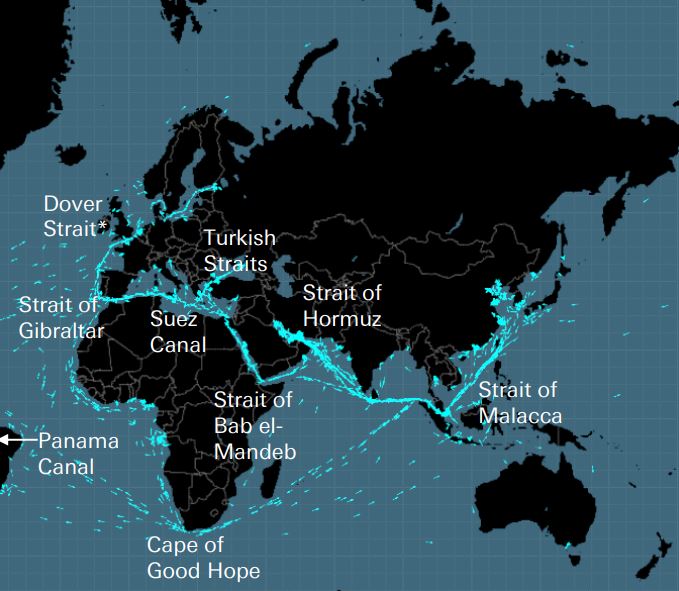
เคเบิล ท่อส่ง ถนน ช่องแคบทะเล เส้นทางบิน และดาวเทียม ก่อให้เกิดเครือข่ายที่เปราะบางซึ่งเป็นรากฐานของเศรษฐกิจโลก เครือข่ายเหล่านี้เป็นเครือข่ายที่มองไม่เห็นซึ่งมีความสำคัญอย่างยิ่งต่อห่วงโซ่อุปทานระดับโลกและชีวิตสมัยใหม่ ซึ่งจะจำได้ก็ต่อเมื่อสงครามในลักษณะเดียวกับในยูเครนหรืออิสราเอลคุกคามหนึ่งในจุดยุทธศาสตร์เหล่านี้ การศึกษาของ Deutsche Bank ให้ความกระจ่างเกี่ยวกับความเชื่อมโยงที่อ่อนแอห้าประการของเศรษฐกิจโลก นั่นคือโครงสร้างพื้นฐานที่ไม่สามารถทดแทนด้วยทางเลือกอื่นได้ ดังนั้นจึงอาจขัดขวางห่วงโซ่อุปทานทั่วโลกได้
เศรษฐกิจโลกยังมีจุดอ่อนบางประการที่แทบทุกคนทราบอยู่แล้ว เช่น โรงงานเซมิคอนดักเตอร์ของไต้หวัน ศูนย์กลางการเงินโลก และสถานีรถไฟใต้ดิน 0.5% ในลอนดอนและปารีส ซึ่งอาจปิดกั้นเครือข่ายครึ่งหนึ่งได้
แต่ยังมีเครือข่ายที่มองไม่เห็นแต่มีความสำคัญอย่างยิ่ง ดังจะเห็นได้จากความเสียหายที่เกิดขึ้นกับท่อส่งก๊าซใต้น้ำและสายเคเบิลโทรคมนาคมระหว่างฟินแลนด์และเอสโตเนียเมื่อวันที่ 10 ตุลาคม ซึ่งชวนให้นึกถึงเหตุการณ์วินาศกรรมท่อส่งก๊าซนอร์ดสตรีมเมื่อปีที่แล้ว ในปี 2010 การปะทุของภูเขาไฟในไอซ์แลนด์ทำให้การจราจรทางอากาศของยุโรป "หยุดชะงัก" เพียงหนึ่งวินาทีเป็นเวลา 8 วัน ดอยช์แบงก์ระบุ
ทั้งยูเครนและอิสราเอลตั้งอยู่ใกล้กับจุดสำคัญดังกล่าวสำหรับเศรษฐกิจโลก
– สายเคเบิลข้อมูล: การสื่อสารดิจิทัลของโลกสูงถึง 99% รวมถึงธุรกรรมทางการเงินมูลค่า 10 ล้านล้านดอลลาร์สหรัฐฯ ผ่านสายเคเบิลใยแก้วนำแสงที่ตั้งอยู่ใต้ท้องทะเล มีสายเคเบิลที่ใช้งานอยู่และที่วางแผนไว้ประมาณ 550 เส้น มีความยาว 1.4 ล้านกิโลเมตร Deutsche Bank อธิบายว่าสายเคเบิลหลายเส้นมีความหนาเพียงเล็กน้อยกว่าบัวรดน้ำ สายเคเบิลเหล่านี้เสี่ยงต่อการถูกจารกรรม การก่อวินาศกรรม และความเสียหายจากอุบัติเหตุ
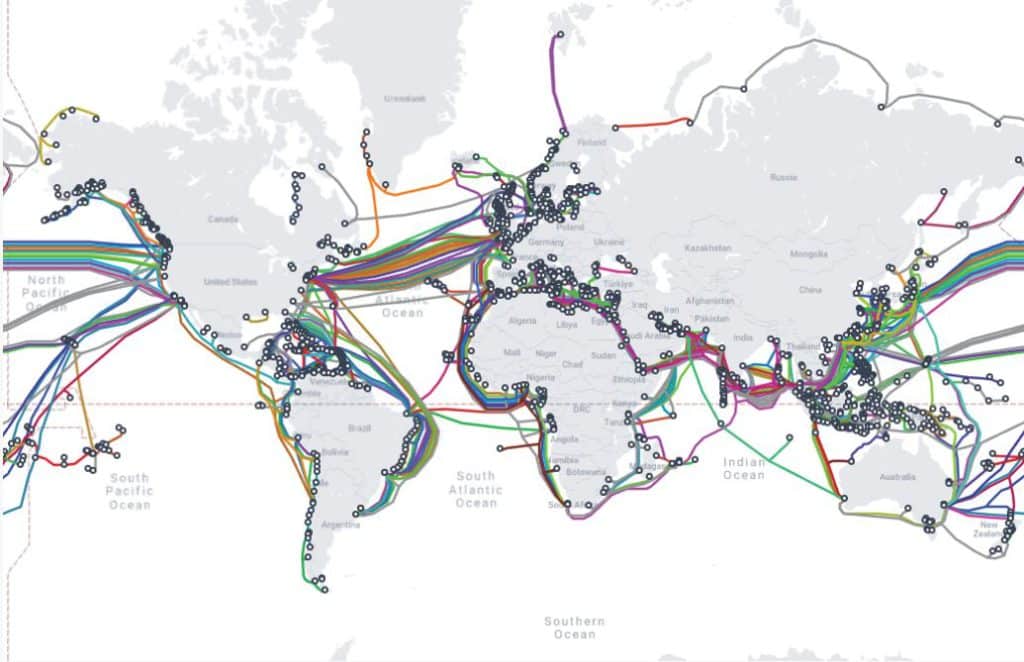
– สายไฟใต้ทะเล: อุปกรณ์เชื่อมต่อไฟฟ้าช่วยให้ประเทศต่างๆ ซื้อพลังงานลมหรือพลังงานแสงอาทิตย์ราคาถูกจากเพื่อนบ้านโดยมีสภาพอากาศเอื้ออำนวยมากขึ้น เพิ่มความมั่นคงด้านอุปทาน และจัดการอุปสงค์ได้ดีขึ้น แต่พวกมันสามารถถูกทำลายได้โดยการก่อวินาศกรรมหรืออุบัติเหตุ
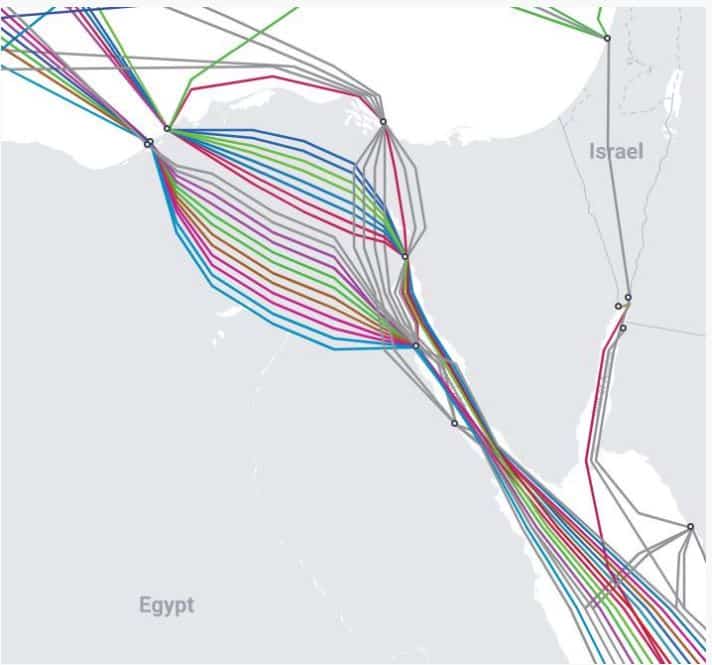
– ท่อส่งก๊าซธรรมชาติ: ยุโรปพึ่งพาท่อส่งก๊าซธรรมชาติส่วนใหญ่ ในปี 2020 บริษัทนำเข้าก๊าซธรรมชาติเกือบ 40% จากรัสเซีย และตั้งแต่นั้นมา บริษัทก็ต้องพึ่งพาท่อส่งจากนอร์เวย์และนำเข้า LNG ตามที่แสดงให้เห็นการระเบิดของ Nord Stream ท่อเหล่านี้เสี่ยงต่อการถูกทำลาย
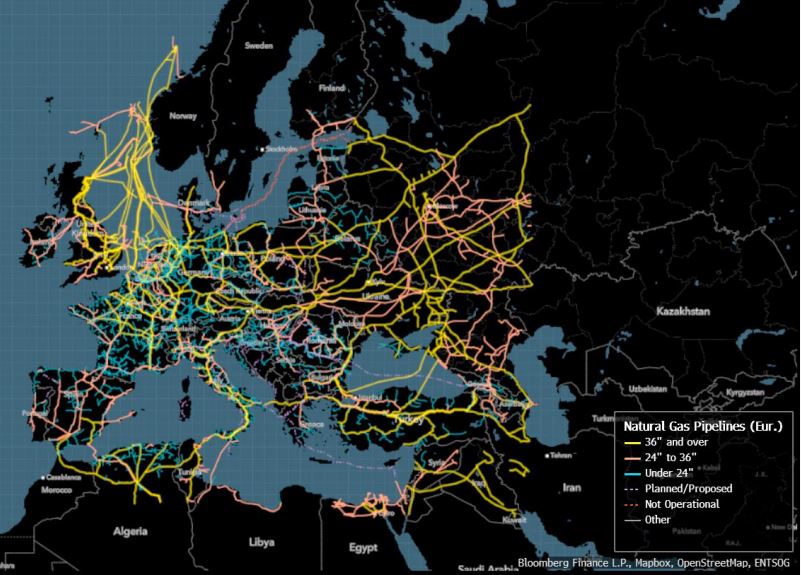
– ท่อส่งน้ำมัน: ท่อส่งน้ำมันส่วนใหญ่ของโลกตั้งอยู่ในยุโรปและเอเชีย โดยมีจุดเริ่มต้นจากรัสเซีย ท่อส่งน้ำมันทั่วไปมีเส้นผ่านศูนย์กลางประมาณ 50 เซนติเมตร และสามารถบรรจุน้ำมันได้มากกว่า 1 ล้านลิตร (หรือ 6,300 บาร์เรลต่อชั่วโมง) เมื่อเปรียบเทียบกันแล้ว หนึ่งบาร์เรลสามารถบรรจุน้ำมันได้น้อยกว่า 200 บาร์เรลต่อครั้ง ท่อส่งน้ำมันทำจากเหล็กกล้า และหากเป็นไปได้ จะถูกฝังไว้ใต้ดิน เช่นเดียวกับท่อส่งก๊าซธรรมชาติ ท่อส่งน้ำมันเหล่านี้มีความเสี่ยงต่อความเสียหาย แผ่นดินไหว และการก่อวินาศกรรม
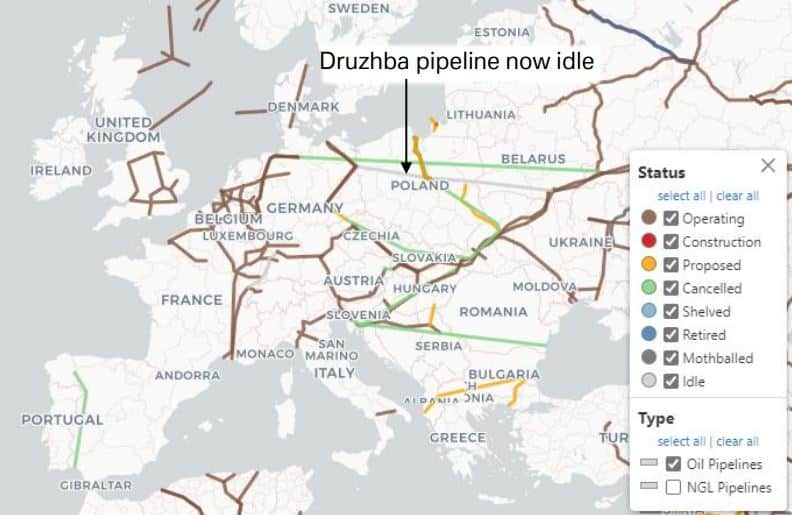
ทางรถไฟและถนนบางแห่งในพื้นที่ห่างไกลมีสัดส่วนอุปทานที่สำคัญต่อเศรษฐกิจโลกสูงอย่างไม่สมส่วน โดยไม่มีทางเลือกอื่น ยกตัวอย่างเช่น พื้นที่กว้างใหญ่ในคองโกและแซมเบีย ซึ่งเป็นผู้ผลิตทองแดงรายใหญ่ที่สุดของแอฟริกา และคิดเป็นสองในสามของปริมาณการผลิตโคบอลต์ทั่วโลก อย่างไรก็ตาม มีถนนเพียงสี่สายเท่านั้นที่ชำรุดและคับคั่งในการขนส่งวัตถุดิบเหล่านี้จากเหมืองไปยังท่าเรือในนามิเบีย แอฟริกาใต้ โมซัมบิก และแทนซาเนีย เหตุการณ์ที่คล้ายคลึงกันกำลังเกิดขึ้นกับถั่วเหลืองของบราซิล ซึ่งเป็นผู้ส่งออกอันดับ 1 ของโลก ในช่วงสองปีที่ผ่านมา ภัยแล้งได้ส่งผลกระทบต่อแม่น้ำซึ่งเป็นเส้นทางน้ำสำคัญ แสดงให้เห็นว่าการขนส่งเหล่านี้มีความเปราะบางเพียงใด
นอกจากแหลมกู๊ดโฮปแล้ว ยังมี "ช่องแคบ" สำคัญอีก 8 ช่องสำหรับการขนส่งทางทะเล ธนาคารดอยซ์แบงก์อธิบายว่า ช่องแคบเหล่านี้เปรียบเสมือน "กุญแจสำคัญ 5 ประการที่ไขประตูสู่โลก" ของจักรวรรดิอังกฤษ หากตัดช่องแคบโดเวอร์ออกไป และรวมคลองปานามา ช่องแคบตุรกี ช่องแคบบาบเอลมาเดบ และช่องแคบฮอร์มุซเข้าไป ยกตัวอย่างเช่น ในด้านน้ำมัน มีการขนส่งทางทะเลมากกว่า 60% โดยช่องแคบฮอร์มุซเป็นจุดที่สำคัญที่สุดสำหรับตลาด เนื่องจากการบริโภคน้ำมันของโลกหนึ่งในห้า (และก๊าซธรรมชาติเหลว (LNG) หนึ่งในสาม) ผ่านช่องแคบนี้ ณ จุดที่แคบที่สุด ช่องแคบฮอร์มุซมีความกว้างเพียง 33 กิโลเมตร

ช่องแคบเหล่านี้เสี่ยงต่อการถูกปิดล้อม การชนกันของเรือหรือการจอดเทียบท่า โจรสลัด การโจมตีของผู้ก่อการร้าย สงคราม และอุบัติเหตุ เช่น การรั่วไหลของน้ำมัน
การขนส่งทางอากาศต้องพึ่งพาเครือข่ายเส้นทางที่มองไม่เห็น ซึ่งอาจได้รับผลกระทบจากสภาพอากาศ สงคราม หรือเหตุการณ์ไม่ปกติ เช่น เมื่อเดือนพฤศจิกายนปีที่แล้วที่สเปนปิดน่านฟ้าเพื่อให้ขีปนาวุธของจีนเข้าสู่ชั้นบรรยากาศโลก การโจมตีโดยเจ้าหน้าที่ควบคุมการจราจรทางอากาศได้สร้างปัญหาใหญ่ให้กับการขนส่งในยุโรปในปีนี้ ขณะที่การปิดการจราจรทางอากาศครั้งใหญ่ที่สุดหลังสงครามเกิดขึ้นในปี 2010 เมื่อภูเขาไฟในไอซ์แลนด์ปะทุ
โลกพึ่งพาระบบกำหนดตำแหน่งบนโลก (GPS) ของสหรัฐอเมริกาอย่างมาก ซึ่งใช้ดาวเทียมระบุตำแหน่ง นำทาง และกำหนดเวลา (PNT) ประมาณ 30 ดวงที่โคจรรอบโลก ซึ่งส่งสัญญาณไปยังผู้ใช้มากกว่า 4 พันล้านคนทั่วโลก แต่สัญญาณเหล่านี้มีสัญญาณอ่อนและเสี่ยงต่อการรบกวน และมีการประเมินว่าหาก "ตัด" GPS ออก ค่าใช้จ่ายจะสูงกว่า $1 พันล้านต่อวัน เฉพาะของสหรัฐอเมริกาเท่านั้น
(ที่มา: https://www.moneyreview.gr/business-and-finance/125480/deutsche-bank-ta-aorata-diktya-poy-kinoyn-tin-pagkosmia-oikonomia-oi-5-adynamoi-krikoi/)




ค้นหาผู้ให้บริการชั้นนำของผลิตภัณฑ์และบริการเดินเรือสำหรับการเดินเรือเพื่อการวางแผนเดินทางทางทะเลที่ปลอดภัย